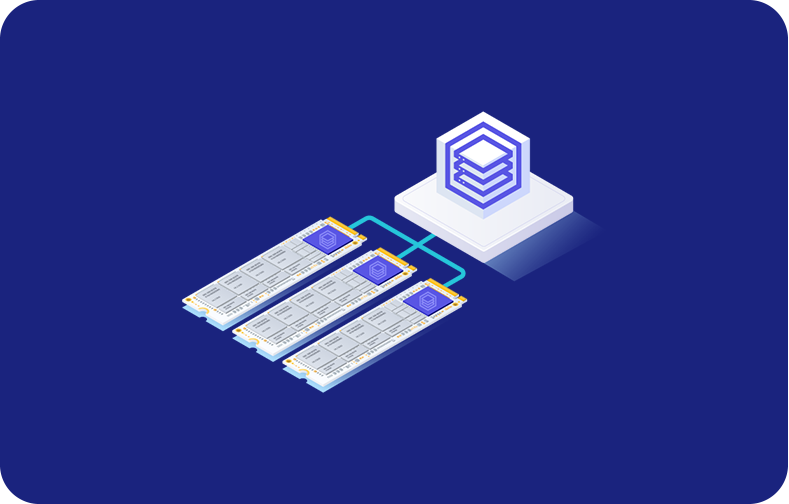Clustercontrol - Your Database Clustering Software
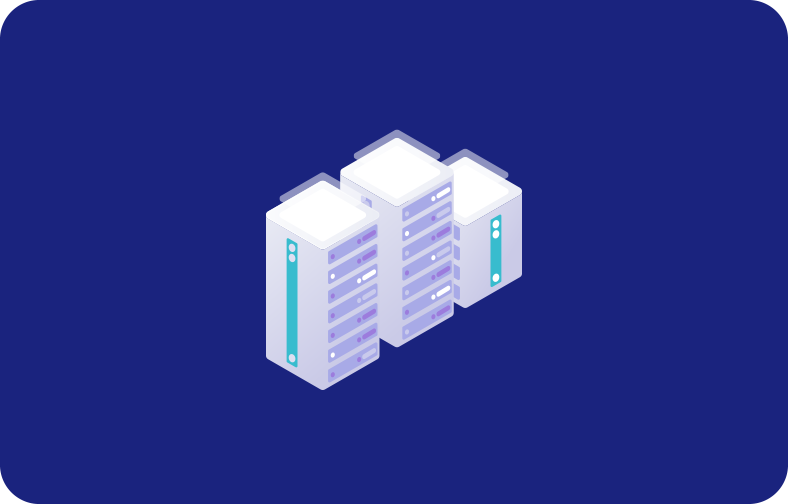
ClusterControl revolutionizes the way organizations manage their data infrastructure. With ClusterControl's robust and user-friendly interface, organizations can effortlessly deploy, monitor, and scale intricate database environments.
From automating repetitive tasks to improving performance and ensuring high availability, ClusterControl streamlines database management in every way.
This frees teams to concentrate on growth and innovation rather than complicated backend operations. Database complexity is a thing of the past, with ClusterControl as your guide to streamlined, efficient, and scalable data management for your company.
-
- Understanding ClusterControl
- ClusterControl Features
- Advantages of ClusterControl
-
How ClusterControl Affects Database Administration
- Enhanced Productiveness
- Improving System Dependability
- Efficient Database Administration
- Flexibility to Address Increasing Needs
- Saving Money by Making the Most of Available Resources
- Identifying Issues proactively
- Flexibility in the Administration of Databases
- Super Easy to Use No Matter Your Level of Experience
- Enhanced Safety Protocols
- Versatility in Different Deployment Settings
- Setting Up ClusterControl for Your Database Infrastructure
- Tailoring Insights to Your Database Platforms
- Optimal Data Management
- Ensuring High Availability and Minimizing Downtime
- Using ClusterControl's Automatic Recovery to Your Advantage
- Managing a Variety of Open-Source Databases
-
Why ClusterControl is a Very Interesting Solution: Keen and Logical Thinking, Automation, and More
- Keen and Logical Thinking
- Repetitive Job Automation:
- Thorough Monitoring and Proactive Resolution of Issues
- Working with Varying Workloads:
- Personalized Reports for Practical Understanding
- High Availability Automated Recovery Features:
- Evaluating Functionality to Enhance Performance:
- Capability to Construct and Maintain Multiple Database Platforms
- An Interface That Anyone Can Use:
- Ongoing Improvements and Development:
Understanding ClusterControl
Aiming to simplify and improve the administration of complex database systems, ClusterControl is an all-inclusive platform for database automation and management. An extensive array of widely recognized open-source databases exhibit compatibility with ClusterControl, an innovation of Severalnines. These include MySQL, MariaDB, PostgreSQL, and MongoDB. Its principal objective is to facilitate efficient data infrastructure management for organizations by standardizing database clusters' deployment, monitoring, management, and scaling.
The ability to administer a dozen database nodes from a single location is a crucial feature of ClusterControl. These include access control, security, backup and restore operations, configuration management, and performance monitoring. Providing flexibility for various infrastructure configurations, the platform facilitates the deployment of databases on-premises or in the cloud.
ClusterControl demonstrates exceptional proficiency in automating regular database management duties, including but not limited to software patching, scaling, and recovery procedures. By reducing the need for manual intervention, this automation guarantees consistency and dependability in executing database operations. The platform optimizes database performance using advanced algorithms and best practices, improving system efficiency and response times.
Furthermore, ClusterControl incorporates features such as automatic failover and load-balancing to prioritize high availability. Contributing to the dependability of mission-critical applications helps reduce Downtime and guarantees that services are always available.
Database cluster health and status metrics are prominently displayed on an easy-to-understand dashboard in ClusterControl's user-friendly interface. Database administrators and DevOps teams can quickly read their systems' performance with this intuitive interface.
ClusterControl Features
Installation & Setup
ClusterControl makes setting up database clusters a breeze thanks to its intuitive design. Dozen database nodes can be configured by users, who can then ensure that all cluster nodes have the same settings. Simplifying the initial deployment process allows for faster and more dependable setups, which is great for both experienced database administrators and inexperienced users.
Notifications and Tracking

Database cluster health and performance may be monitored in real time with the platform's sophisticated monitoring tools. ClusterControl keeps an eye on important indicators including query performance, memory use, and CPU usage.
Setting up customizable alerts allows administrators to be notified of any suspicious activity or possible problems, allowing for proactive problem management and prompt resolution before they affect the system's performance.
Robotic Process Automation

ClusterControl streamlines regular database administration processes, including backups, recovery, and software patching. In addition to reducing the amount of manual labor required by administrators, automation also guarantees the efficient and consistent execution of activities. This functionality ensures the environment is secure and runs well with little to no maintenance.
Optimal Performance

To maximize database efficiency, the platform makes use of cutting-edge algorithms and industry standards. Database cluster responsiveness is the target of ClusterControl's intelligent tuning and configuration modifications. This capability is essential to the needs of apps with heavy traffic and guarantees the best possible user experiences; this capacity and High Availability.

ClusterControl incorporates automatic failover and load-balancing capabilities to emphasize high availability. By automatically rerouting traffic to healthy nodes, the platform can minimize downtime and ensure ongoing service availability in the event of a node loss. These features are crucial for programs that need data access without interruption and minimal Downtime in the event of a system failure.
Flexibility in scaling

Scalable database solutions are crucial for enterprises as they expand. By letting administrators add or remove nodes from the cluster on the fly, ClusterControl makes scaling a breeze. This adaptability guarantees that the database architecture can handle shifting workloads and resource demands, meeting the company's ever-changing needs.
Controlling Access and Security

ClusterControl has strong security measures to protect confidential information. Administrators can set up access restrictions to govern who has what, and data is encrypted both while in motion and when stored. This strengthens the system's security by ensuring that only authorized workers may access essential database functions.
Interface that is Easy to User Demand
The intuitive dashboard of ClusterControl provides a comprehensive review of the database cluster's performance and status. This interface is designed to be user-friendly to help administrators and DevOps teams manage their database infrastructure efficiently. It allows quick navigation and easy access to essential information, empowering them to make informed decisions.
Advantages of ClusterControl

Organizations managing more database technologies in challenging and ever-changing environments can benefit from ClusterControl's comprehensive solution, which streamlines database operations, enhances efficiency, and ensures high availability.
Organizations dealing with complicated database setups might benefit greatly from ClusterControl. Some significant benefits that make ClusterControl useful are as follows:
Streamlined Data Administration

With ClusterControl's unified interface, administering many database nodes is a breeze, and you won't have to lift a finger to make changes across all of your clusters.
The Mechanization of Database Tasks

Enhanced Productivity: Automating software patching, scaling, and recovery procedures reduces human workload and guarantees consistent use of best practices, leading to substantial efficiency gains.
Various Database Technologies Supported

Complexity: ClusterControl provides a unified solution for managing numerous databases, catering to more database technology requirements inside an organization. It supports open-source databases, such as MySQL, MariaDB, PostgreSQL, and MongoDB.
Versatile Deployment Choices

Organizations with varying infrastructure preferences can take advantage of ClusterControl's adaptability, which allows for both on-premises and cloud-based deployments. The flexibility to quickly adapt makes it possible to integrate with preexisting structures.
Improving Performance and Scalability

Automatic scalability and performance optimization features in ClusterControl allow database clusters to adjust to fluctuating workloads and perform at peak efficiency regardless of the amount of data being processed.
Guaranteed Uptime and Dependability

Less Downtime:* High availability is improved with automated failover and load-balancing tools, which reduce Downtime and ensure that services are available continuously. Critical applications benefit from this because it makes them more reliable and resilient.
Thorough Tracking

With ClusterControl's powerful monitoring capabilities, administrators may proactively find and fix problems before they affect system performance. By taking this preventative measure, we can make the database environment more stable.
Risk and Compliance

ClusterControl has security management tools, including permissions and access restrictions. This makes sure that only authorized individuals can access sensitive data.
Efficiency in Cost

Optimal Use of Resources: By streamlining processes and improving overall performance, ClusterControl helps businesses make the most of their current infrastructure, reducing expenses.
Interface that is Easy to Use

Simple Control Panel: Even individuals without technical expertise can navigate and comprehend the system's health and status thanks to the intuitive interface, which streamlines the administration and monitoring of database clusters.
How ClusterControl Affects Database Administration

Increased operational efficiency, improved system reliability, simplified database management, scalability to meet growing demands, cost savings, proactive issue identification, database management versatility, an intuitive interface, increased security measures, and adaptability to different deployment environments are all outcomes of implementing ClusterControl.
Enhanced Productiveness

ClusterControl eliminates the need for human intervention by automating repetitive database management chores. Operational efficiency is enhanced since administrators are free to concentrate on high-level initiatives instead of mundane, repetitive activities.
Improving System Dependability

System reliability is enhanced by ClusterControl's automated failover and load-balancing functions. By reducing Downtime and guaranteeing the continuous availability of services, organizations may provide more reliable and stable applications.
Efficient Database Administration

Multiple database nodes can be easily administered through the centralized management interface. A more organized and effective workflow is the result of this simplified method of database management, which makes monitoring, configuration, and maintenance duties easier.
Flexibility to Address Increasing Needs

Businesses can dynamically scale database clusters using ClusterControl to meet increasing data demands. The ability of the database environment to scale guarantees that it can adjust to shifting workloads while keeping performance at its best.
Saving Money by Making the Most of Available Resources

Organizations may make the most of their current infrastructure thanks to automation and performance optimization, which help to maximize resource efficiency. Better utilization of resources and reduced need for redundant hardware investments lead to cost savings.
Identifying Issues proactively

Using ClusterControl's extensive monitoring tools, administrators may proactively detect and resolve issues. Database stability and interruption prevention are enhanced when companies can identify possible problems before their effects on system performance.
Flexibility in the Administration of Databases

ClusterControl provides an adaptable answer for businesses with varying database technology needs by supporting numerous open-source databases. Because of its adaptability, organizations may control several database types via a single interface.
Super Easy to Use No Matter Your Level of Experience

Regardless of their experience, anyone may use ClusterControl thanks to its user-friendly dashboard. Keeping tabs on system health and other essential administration duties is a breeze, even for less experienced administrators.
Enhanced Safety Protocols

Access restrictions and user permissions are security management capabilities included in ClusterControl. Organizations may safeguard sensitive data and ensure only authorized workers have access by employing certain security procedures.
Versatility in Different Deployment Settings
![]()
Depending on your architecture preferences, ClusterControl can quickly adapt to work with on-premises or cloud-based deployments. Integrating ClusterControl into an organization's current infrastructure is a breeze.
Setting Up ClusterControl for Your Database Infrastructure

Before you can take advantage of ClusterControl's robust database management features, you must install it. The installation of your database infrastructure will go off without a hitch with the help of this detailed tutorial.
Make sure your system satisfies the requirements listed in the ClusterControl manual before you begin the installation process. Checking OS compatibility, network settings, and hardware specs may be part of this process.
Gaining Access to ClusterControl
The installation package that is compatible with your operating system can be downloaded from the official ClusterControl website or repository. ClusterControl is compatible with a wide range of Linux distributions; however, the installation procedure may differ significantly depending on the platform you select.
Script Execution to install Clustercontrol
The installation script should be run once the installation package has been downloaded. This script will walk you through installing ClusterControl on your PC by automating most of the configuration procedures.
Setting Up ClusterControl
Several configuration options will be asked for throughout the installation process, including database credentials, web server settings, and communication ports. Give careful consideration to the information that is required according to your database infrastructure.
Database Configuration
![]()
To keep track of configuration and monitoring information, ClusterControl needs its database. When configuring ClusterControl, be sure to provide the database type and connection information throughout the installation process.
User Interface Settings for the Web
![]()
Change the port number that allows you to access the ClusterControl dashboard under the web interface settings. Doing so will guarantee that the administration interface can be safely accessed with any web browser.
Keep ClusterControl Safe

Take precautions to ensure the installation is secure. Make sure that only authorized workers may use the ClusterControl interface and set passwords for different components.
Finishing Up the Setup

The installation script will finish setting everything up once all the configuration stages are finished. Check that the installation went well and that the ClusterControl services were successfully started. Make sure there are no reported faults or issues.
Getting to the ClusterControl Control Panel

Launch your web browser and go to the port number where the web interface has been set up. Use the credentials you created when installing the software to log in. The ClusterControl dashboard, which shows you a summary of your database clusters, should now be accessible.
Verifications after Installation

Make sure ClusterControl is working properly by doing post-installation checks. As part of this process, you may need to test the most fundamental features, ensure a secure connection to your database nodes, and review the dashboard's health status.
Modernization and Improvement
![]()
Keep an eye out for ClusterControl upgrades and new releases on a regular basis. If you want to make sure your installation is always running the most recent version with all the newest features and security fixes, follow the upgrade methods in the manual.
Tailoring Insights to Your Database Platforms

ClusterControl provides a versatile and personalized means of delving into specific database systems by allowing users to construct their reports. Because of this improvement to the platform's flexibility, businesses can tailor data extraction to their own needs in database administration.
Adding a level of customization and adaptability to database management, ClusterControl allows users to produce custom reports. Organizations may take advantage of ClusterControl's adaptability to optimize performance, boost security, and make data-driven decisions that match their specific operational demands by customizing insights to each supported database platform's intricacies.
Making Performance Reports for Databases
Users of ClusterControl can tailor reports to highlight key performance indicators for their databases. Database administrators can gain valuable insights for optimization by customizing these reports to individual platforms. This allows them to precisely monitor and analyze parameters like query response times, throughput, and resource consumption.
Optimizing and Analyzing Queries
We can tailor reports for every database platform we support to highlight query optimization and analysis. Users can pinpoint inefficiencies and bottlenecks in the query execution process by diving into the specifics with ClusterControl. This personalized strategy makes proactive steps to improve database performance easier.
Planning for Capacity and Scaling
Businesses can zero in on database-platform-specific capacity planning and scaling tactics by creating their unique reports. Information regarding resource consumption, growth trends, and trends in historical data helps with making smart judgments about expanding the infrastructure to efficiently handle changing data demands.
Ensuring Safety and Controlling Access
Insights about security, including monitoring of access controls and user activities, can be highlighted in tailored reports. To help managers see possible security risks and verify adherence to security regulations, this gives a complete picture of how users interact with the database.
Maintaining a Healthy Database
You can tailor ClusterControl reports to focus on database upkeep and health. To ensure the database environment is healthy and stable, monitoring system logs, keeping track of regular maintenance tasks, and detecting any anomalies that may need attention are necessary.
Documentation of Compliance
Companies needing to stay in compliance can use ClusterControl's custom reporting features to ensure their reports align with regulations. There will be easy access to audit trails for compliance purposes, and the database infrastructure will remain compliant.
Schedule reports automatically
Automated report scheduling is just one more way ClusterControl gives users the freedom to get personalized insights at regular intervals. This proactive method automatically keeps Stakeholders apprised of the database platform's security, performance, and other critical parameters.
Data Presentation and Visualization Tools
Not only can you include raw data in ClusterControl custom reports, but you can also include visualizations like charts and graphs. Because of this, insights are presented better, simplifying data for both technical and non-technical audiences, and allowing for greater comprehension.
Optimal Data Management
ClusterControl is an exceptional database management solution since it offers extensive capabilities to guarantee effective data management and goes beyond the fundamentals. This investigation into ClusterControl's role in sustaining peak database performance focuses on two critical areas: scalability and testing capabilities.
When it comes to optimizing database speed and scalability and handling variable workloads, ClusterControl's testing capabilities and scalability features are crucial. Optimal data management in today's complex and ever-changing contexts relies on these features, which can be fully realized when enterprises use ClusterControl to its maximum capacity.
Features for Scalability
Scaling on the fly
Organizations may easily adjust to shifting workloads with ClusterControl's scalability features. Database clusters can be flexibly scaled to meet changing demands with the help of ClusterControl, whether those demands are for more data or different types of user activity. The capacity to adjust is vital for keeping performance at a high level even when things get hectic.
Successfully Balancing Loads
Load-balancing is now an essential aspect of ClusterControl's scaling approach. To avoid any one server being overwhelmed, the platform dynamically distributes incoming traffic among all of its nodes. This aids in achieving ideal data dissemination and reaction times while simultaneously guaranteeing uniform resource consumption.
Automatic Redundancy
The automated failover techniques in ClusterControl are very responsive to node failures. The software keeps up availability and avoids Downtime by automatically rerouting traffic to healthy nodes. Particularly in highly available settings, this function is critical for preserving optimal data accessibility.
Capabilities for Testing
Testing the Performance of Databases
Administrators may assess and optimize database performance with the help of ClusterControl's powerful testing tools. By simulating performance testing scenarios, companies may find possible bottlenecks, improve setups, and check if the database infrastructure can handle different workloads.
Using as a benchmark
One of ClusterControl's main features is its ability to perform benchmarking. Organizations can judge hardware upgrades, configuration changes, or optimizations by comparing the database's performance under different scenarios.
Using Active Query Logs
ClusterControl keeps a close eye on the active query log, which gives you more information about how each query is doing. If wasteful queries are affecting database performance, this tool can help you find them. Data retrieval and processing speeds can be kept optimal with the help of administrators who optimize these queries.
Ensuring High Availability and Minimizing Downtime
To guarantee high availability and minimize Downtime in database clusters, ClusterControl's automatic recovery technologies are leading the way. Even when faced with unforeseen interruptions, enterprises can retain robust, uninterrupted services thanks to this crucial functionality. Learn about the advantages of ClusterControl and how it accomplishes this.
Systems for Automated Failover
Intelligent automated failover methods are built into ClusterControl and respond quickly in the event of a node loss. When a node goes down, ClusterControl will automatically detect it and start the failover process, which will reroute traffic to nodes that are up and running again. This preventative method keeps key programs online by reducing the likelihood of interruptions.
Uptime Guaranteed
By automating failover procedures, ClusterControl ensures that database services are always available. By default, ClusterControl will redirect traffic to other active nodes if one of them goes down. This consistent availability is crucial for any company that depends on database access.
Duplicate and redundant data
By implementing redundancy and replication mechanisms, ClusterControl aims to enhance high availability. The platform guarantees data integrity by keeping several copies of data across nodes. This allows the system to switch to another node without any disruption if one node experiences problems. The redundancy in this system makes it more reliable and less vulnerable to failures.
Continuous Tracking and Identification
The automated recovery functions of ClusterControl are supported by the ability to monitor in real time. The platform constantly monitors database node health and performance. Before problems affect the system as a whole, ClusterControl's detection methods take action by initiating automatic recovery operations in the case of abnormalities or node failures.
Successfully Balancing Loads
In addition to failover, ClusterControl's automatic recovery features effective load-balancing. The platform implements intelligent redistribution of incoming traffic across healthy nodes in the event of node failures or increasing demand. This improves the system's equilibrium and efficiency by maximizing resource use and guaranteeing continuous availability.
Using ClusterControl's Automatic Recovery to Your Advantage
Reduced Downtime: Automatic recovery keeps key services available by quickly fixing problems without human intervention, reducing Downtime.
Database infrastructure is now more reliable thanks to automated failover and redundancy solutions, which lessen the likelihood of service interruptions.
Users have uninterrupted service access thanks to ClusterControl's automatic recovery features, which keep services up and running at all times.
Resolving Issues Before They Happen: ClusterControl's real-time monitoring and detection capabilities enable it to handle issues before they happen, keeping databases stable and avoiding disruptions.
The capacity to dynamically adjust to changing workloads and changes in node health is a key component of the system's scalability, which automatic recovery mechanisms enhance.
Managing a Variety of Open-Source Databases
As a complete and flexible database administration solution, ClusterControl distinguishes out because of its seamless support for several open-source databases.
One of the most popular relational database management systems, ClusterControl provides robust support for MySQL. Thanks to ClusterControl, which ensures performance and stability, MySQL optimization, monitoring, and deployment is a breeze.
ClusterControl is compatible with MariaDB, an intuitive MySQL database solution. Companies that use MariaDB can benefit from ClusterControl's proactive monitoring, automation tools, and unified management interface.
A primary focus of PostgreSQL:
With ClusterControl's more database technologies, controlling PostgreSQL clusters is an exciting solution, whether your database is hosted in the cloud like VPSserver or on-premises. This results in more efficient and reliable operations.
Regarding database management, ClusterControl is versatile enough to handle relational and non-relational systems, including MongoDB. Organizations utilizing MongoDB for document-oriented database requirements can use ClusterControl's functionality to deploy, monitor, and scale effortlessly.
Advantages of Using ClusterControl to Manage Several Open-Source Databases:
Streamlined Control Panel:
With ClusterControl's unified administration interface, administrators can manage all of your database technologies from a single location.
Platform-Independent Consistent Automation:
There is less of a learning curve for administrators thanks to the platform's consistent automation features across all supported databases. Automating mundane processes increases productivity and decreases human error.
Monitoring Performance Across Different Databases:
ClusterControl provides a comprehensive overview of the status and efficiency of diverse clusters through its monitoring features, which include a wide range of database systems. This cross-database monitoring makes proactive detection and resolution of issues possible.
Deployment Flexibility:
Using ClusterControl, organizations can create and manage clusters that include MySQL, MariaDB, PostgreSQL, and MongoDB databases. This versatility allows them to meet the specific needs of varied applications.
Efficiently Expanding Across Different Technologies:
No specific database type is required to use ClusterControl's scaling features. The platform guarantees an effective and smooth scaling process across different database technologies, whether it's relational databases like MySQL and PostgreSQL or NoSQL databases like MongoDB.
For relational databases like MySQL and PostgreSQL, ClusterControl's scaling capabilities make adding or removing nodes from clusters easy. With ClusterControl, scaling actions are executed seamlessly, preserving optimal performance, whether it's increasing resources to current nodes or adding additional nodes to distribute the burden horizontally.
The platform's flexibility covers these types of databases as well. ClusterControl makes adding more nodes to MongoDB clusters easy, allowing them to scale horizontally in response to increasing data demands. In this way, businesses that use MongoDB can be certain that their infrastructure can grow with their workloads without sacrificing efficiency in data management.
Advantages of Effortless Scaling Across Different Technologies:
A Reliable Experience for Users:
Even when expanding to other kinds of databases, the interface remains consistent and easy to use for administrators. The streamlined method makes the scaling operation intuitive regardless of the underlying technology.
Optimizing the Distribution of Resources
Whether a company is using a relational or NoSQL database, ClusterControl's scaling capabilities will help them distribute resources efficiently. As a result, assets are doled out to the unique needs of each database system.
Flexible Response to Variations in Workload
Organizations can respond quickly to changes in workload when their systems can scale without any issues. When dealing with relational databases, ClusterControl guarantees a responsive scaling process, which is essential when dealing with increased transactional demands, or when dealing with NoSQL databases, which increase data storage needs.
Improved Availability and Performance:
Improved performance and availability are outcomes of simplified scaling. Databases can easily adjust to changes in demand or growth thanks to ClusterControl's scalability features, which keep the infrastructure running at peak performance and minimize Downtime.
Methodology for Streamlined Management:
An organization's management of heterogeneous databases is made easier with ClusterControl's uniform approach to scalability. The complexity of administering several database types can be reduced when administrators adopt similar scaling concepts across technologies.
Why ClusterControl is a Very Interesting Solution: Keen and Logical Thinking, Automation, and More
With its many distinguishing features, ClusterControl is one of the very interesting solutions for effective database management. Let's take a closer look at what makes ClusterControl such a great option for businesses who are looking for efficient database management.
Keen and Logical Thinking

ClusterControl's method of database administration demonstrates astute and rational reasoning. Automating mundane operations, finding and fixing problems before they happen, and optimizing performance using real-time data are all signs of the platform's intelligence. This sharp thinking guarantees a proactive and strategic approach to managing complicated database environments.
Repetitive Job Automation:

The extensive automation functions are one of ClusterControl's most notable qualities. Deploying, scaling, failover, and recovering databases are some of the common management chores it streamlines. This makes administrators' jobs easier and ensures that best practices are applied consistently across the database architecture.
Thorough Monitoring and Proactive Resolution of Issues

Database cluster health and performance may be observed in real-time using ClusterControl's advanced monitoring features. The platform finds problems proactively before problems affect system performance so administrators can fix them quickly. This forward-thinking strategy aligns with the platform's astute planning, guaranteeing a secure and reliable database setting.
Working with Varying Workloads:
Intelligent response to changing workloads is on display in the platform's flexible scaling capabilities. Whether expanding horizontally or vertically, ClusterControl adapts the database architecture on the go to suit fluctuating needs. This flexibility demonstrates a considerate approach to managing resources, as it guarantees optimal performance in different environments.
Personalized Reports for Practical Understanding

ClusterControl may be tailored to meet the specific demands of any business thanks to its report-creation capabilities. A more customized approach to data management is encouraged by this feature, which lets users customize insights and analytics for particular database platforms. Improving the database management approach is made more accessible and more tailored with the option to create bespoke reports.
High Availability Automated Recovery Features:
![]()
Thanks to its automated recovery features, the platform grasps the importance of meeting high-availability needs. Reducing Downtime and improving the overall resilience of critical applications are two goals of ClusterControl's automated failover operations and continuous availability assurances. This focus on automatic recovery aligns with the platform's long-term plans for a robust database architecture.
Evaluating Functionality to Enhance Performance:
Administrators can test and optimize database performance with ClusterControl's testing features. Organizations may maximize data management and fine-tune setups with the help of performance testing and benchmarking. The testing capabilities demonstrate a systematic strategy for optimizing performance and maximizing resource efficiency.
Capability to Construct and Maintain Multiple Database Platforms

ClusterControl's adaptability is demonstrated by its compatibility with numerous open-source databases, such as MongoDB, PostgreSQL, MariaDB, and MySQL. Because of its flexibility, enterprises with diverse database infrastructures can utilize a unified solution. An awareness of the varied nature of technology was evident in the platform's adaptability.
An Interface That Anyone Can Use:

Users of varied skill levels will have no trouble navigating ClusterControl thanks to its intuitive dashboard. Whether you're a seasoned pro or just starting, the platform's UI makes database management a breeze. This all-inclusive strategy aligns with the platform's astute goal of democratizing database administration.
Ongoing Improvements and Development:
ClusterControl exemplifies a proactive mindset by continuously evolving and upgrading. It undergoes regular upgrades and upgrade operations to keep the platform up-to-date with industry standards and include new features. The commitment to staying up-to-date elevates the platform's value proposition in general.
The Final Word
Ending this in-depth analysis of ClusterControl, we can see how its many features can revolutionize database administration. The platform's intuitive design, which streamlines the process of setting up the database infrastructure for best performance, is highlighted in the installation guide. Organizations emphasize effective data management more, and ClusterControl's testing capabilities and scalability features are becoming increasingly valuable. With these features, administrators may optimize database performance through rigorous testing, flexibly scale their clusters to handle workloads and more.
In addition, customers can customize insights to specific database platforms with ClusterControl's custom reporting capability, highlighting its versatility. This allows for a more tailored and effective database management method and improves adaptability. High availability and minimal Downtime are further achieved by the platform's automatic recovery features, which are essential, as previously mentioned. Automated failover methods and continuous availability solutions acquire a resilient database environment. This ensures that disturbances are quickly rectified and services remain accessible.
ClusterControl is a one-stop shop for enterprises dealing with the challenges of modern data infrastructure because of its dedication to proactive monitoring, real-time detection, and adequate load balancing. An exciting and valuable tool for effective database administration, the platform's capacity to automate mundane operations, enhance efficiency, and supply an intuitive user interface indicates its sharp and rational thinking.
ClusterControl comprehensively affects database management, touching on deployment, monitoring, automation, and recovery rather than just one aspect. Organizations can stay up-to-date with industry best practices in database management by using its ever-evolving features and capabilities, as shown through upgrades and updates.
Overall, ClusterControl is an essential and ever-changing solution that helps enterprises deal with different database technologies, keep their systems running smoothly, and maximize their performance. Businesses looking for a scalable, flexible, and effective database management solution can rely on ClusterControl as the digital landscape changes.
Frequently Asked Questions
What role does ClusterControl play in a database cluster's automatic recovery features?
ClusterControl automates failover processes and applies advanced algorithms for automatic recovery features to guarantee continuous availability and minimize downtime in the event of node failures.
Is ClusterControl capable of managing multiple systems and other database platforms?
Indeed, ClusterControl is a flexible solution for enterprises managing numerous database technologies across other database platforms. It supports various database operations, including MySQL, MariaDB, PostgreSQL, and MongoDB.
How do I go about putting ClusterControl into my system?
Setting up ClusterControl couldn't be easier. It requires the use of package managers or the execution of a simple script. The ClusterControl user manual provides detailed instructions on how to install ClusterControl, the database clustering software.
If a database cluster's nodes aren't healthy, how can ClusterControl tell about node health status?
To help managers keep an eye on things and fix problems as soon as they arise, ClusterControl's software dashboard shows real-time data about the node health status in a cluster.
To what extent does ClusterControl provide testing capabilities for managing data record?
By enabling administrators to assess and adjust the cluster's performance, ClusterControl's testing features—including database performance testing and benchmarking—guarantee managing data records.
What is ClusterControl's method for controlling and keeping tabs on twelve database nodes?
All nodes in a cluster can have their activity monitored by ClusterControl's all-inclusive monitoring solution. In this way, managers may examine efficiency, locate slow spots, and maximize the use of available resources.
Is it possible to create custom reports to work with specific database systems?
Yes, ClusterControl allows users to create custom reports, which can be tailored to meet an organization's specific requirements and offer valuable insights into the performance and status of database platforms.
Just what is it about ClusterControl that makes it such a compelling database management solution?
ClusterControl is an attractive option for effective database management because of its intuitive design, high availability, compatibility with several database platforms, and ability to automate mundane activities.
To what extent does ClusterControl improve database performance using the active query log?
An indispensable tool for database optimization, ClusterControl constantly watches the active query log, letting administrators examine and enhance queries for better database performance.
Can oversee and administer more than a handful of database nodes with ClusterControl?
Indeed, ClusterControl is built to manage extensive rollouts. Organizations with vast database infrastructures can benefit from its scalability and agility since it successfully manages and monitors a dozen or more database nodes.









